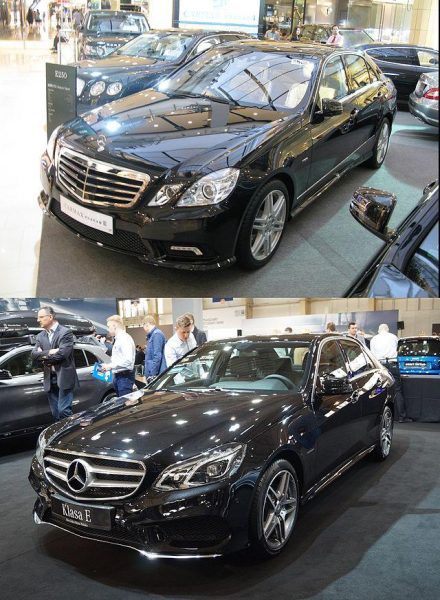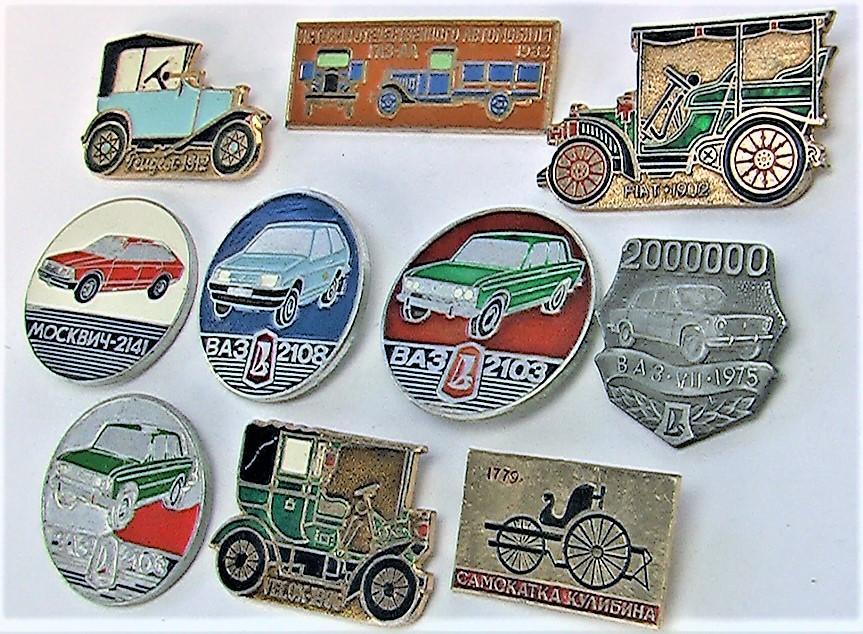
What did the signs of Soviet cars look like and what did they mean
Content
In 1976, in Jelgava, near Riga, the production of the iconic Rafik-2203 began. Soviet designers tried to make car signs modern. The radiator grille of the mass-produced van was decorated with a spectacular red plate, on which the silhouette of a minibus with the upper part in the form of the abbreviation RAF is indicated by silver lines.
Signs of Soviet cars are part of the history of the USSR. They are imbued with deep symbolism and executed at a high artistic level. Often, residents of the country took part in the discussion of sketches.
AZLK (Lenin Komsomol Automobile Plant)
The Moscow car assembly plant began operating in 1930. Adding to its name the phrase "the name of the Communist Youth International", he received the abbreviation KIM on the emblem against the background of a red proletarian flag, as befits the badges of the USSR cars. In the victorious 1945, the production was renamed the Moscow Small Car Plant. The production of Moskvich was launched, on the sign of which the Kremlin Tower appeared and a ruby star proudly shone.
Over time, the elements changed slightly, but the expressive symbol continued to popularize the Soviet auto industry throughout the world. Moskvitch attracted the attention of the audience, competing with the best foreign cars in the most popular international rallies: London-Sydney, London-Mexico City, Tour of Europe, Golden Sands, Raid Polski. As a result, it was exported to many countries.
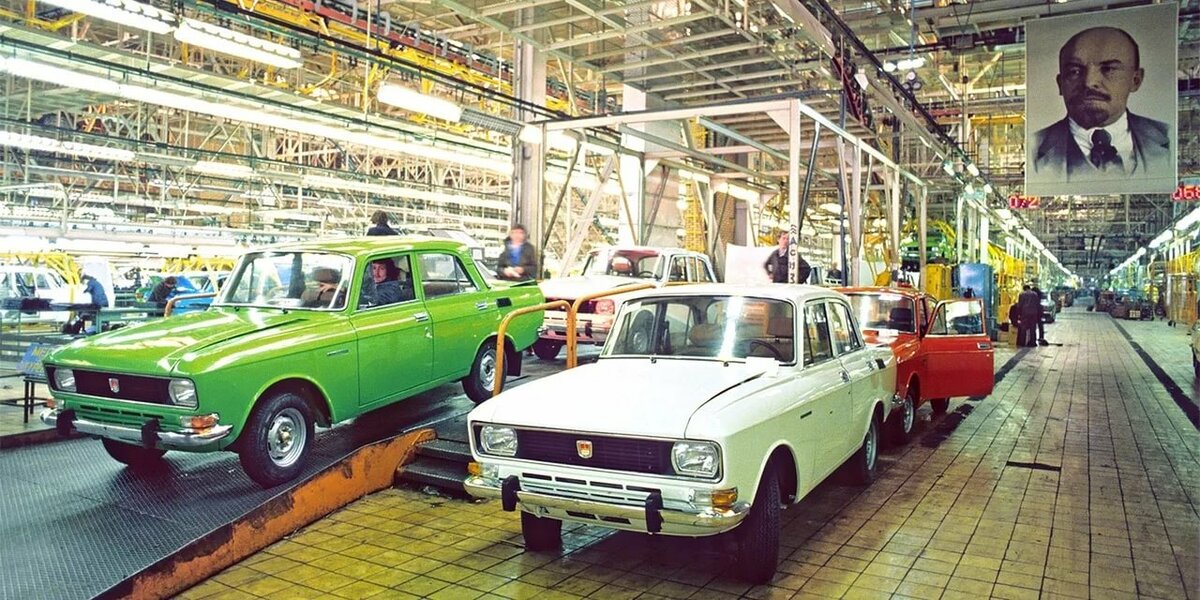
AZLK (Lenin Komsomol Automobile Plant)
At the end of the 80s, Moskvich-2141 went into production. On its basis, machines with princely names "Ivan Kalita", "Prince Vladimir", "Prince Yuri Dolgoruky" are being developed. On the nameplate there remains one nondescript metallic-colored prong of the Kremlin wall, stylized as the letter “M”. It is complemented by the AZLK signature, since since 1968 the company has been called the Lenin Komsomol Automobile Plant.
In 2001, one of the oldest domestic car brands was no longer produced, its badges and nameplates can now only be found on rarities, many of which live out their lives in private collections or polytechnic museums.
VAZ (Volga Automobile Plant)
In 1966, the government of the Soviet Union entered into a contract with an Italian automaker to create a full cycle enterprise. The familiar “penny” (“VAZ 2101”) is the first car that an ordinary worker could freely buy. This is a slightly modified FIAT-124 for local conditions, which in 1966 became the "Car of the Year" in Europe.
At first, assembly kits without a badge on the radiator grill were sent to the USSR from Turin. Domestic designers replaced the abbreviation FIAT with "VAZ". With this rectangular emblem, the first Zhiguli rolled off the Tolyatti assembly line in 1970. In the same year, cars began to be equipped with nameplates supplied from Italy, developed on the basis of a sketch picture by A. Dekalenkov. On a purple lacquered surface with barely noticeable waves, a relief chrome-plated old Russian boat floated. Its inscription included the letter "B", presumably - from the name of the Volga River or VAZ. At the bottom, the signature "Tolyatti" was added, which later disappeared, since its presence contradicted the requirements for a trademark.

VAZ (Volga Automobile Plant)
In the future, the emblem of the brand did not radically change. In accordance with the trends of the global automotive industry, the evolution of the boat, the background on which it is located, and the frame took place. On the "sixes" the field turned black. Then the icon became plastic, the waves disappeared. In the 90s, the silhouette was inscribed in an oval. There is a blue color variant.
GAZ (Gorky Automobile Plant)
"Volgari" created, perhaps, the most spectacular signs of cars in the USSR. Different cars of the Gorky enterprise carried various emblems on the hood. Produced since 1932, the Model A cars and AA trucks, which were based on Ford products, inherited a rather unpretentious nameplate design from their forefathers. On the oval plate was a sweeping inscription “GAZ them. Molotov”, surrounded on both sides by ideologically charged images of crossed hammer and sickle. It was either completely black, or with a contrasting light gray tint.
The famous “emka” (“M 1936”), published in 1, received a more constructivist label: the letter “M” (Molotovets) and the number “1” were intricately combined, the text was applied in red on white or silver on scarlet.
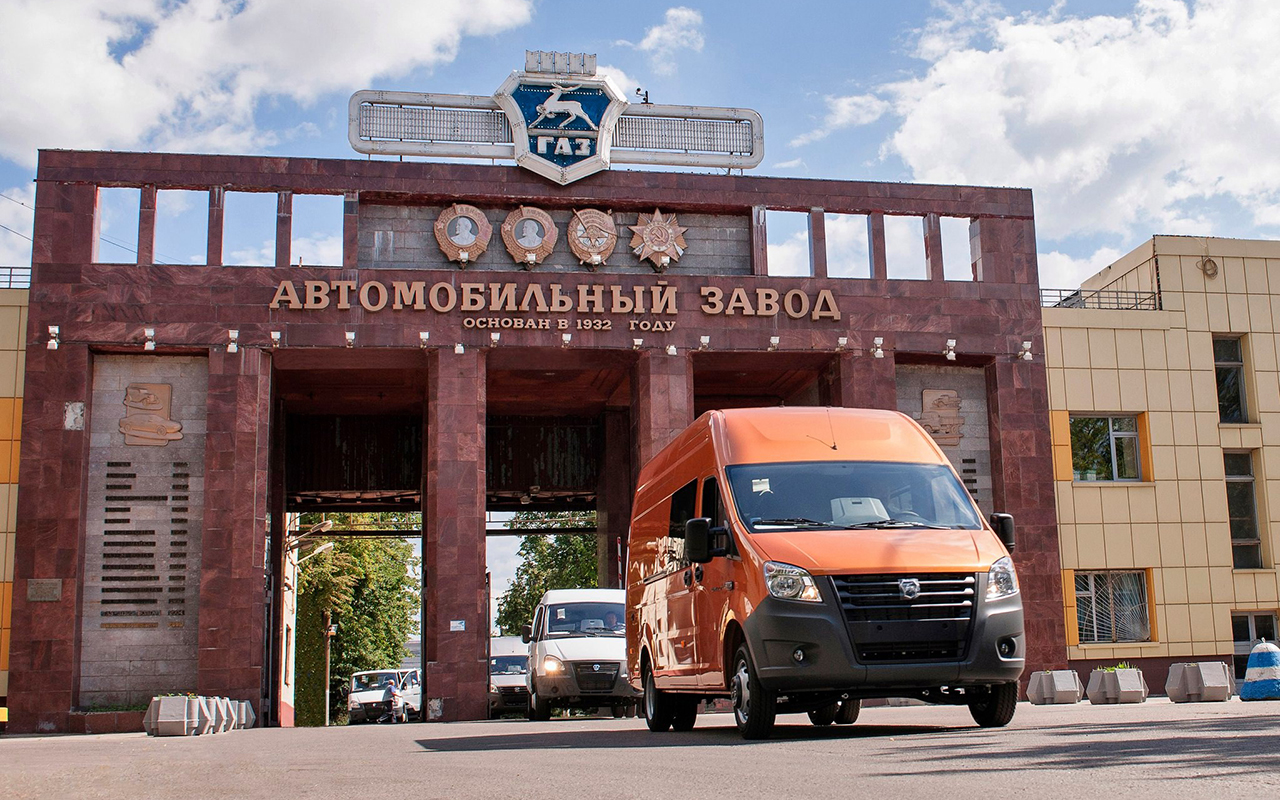
GAZ (Gorky Automobile Plant)
In 1946, the next model came out, with the serial number "M 20". In commemoration of the defeat of the Nazis in the Great Patriotic War, it was called "Victory". The carved "M" was seen as a reference to the battlement of the Kremlin wall; in a seagull hovering over the water - the Volga River. The letter is made in red color with a silver edging, which symbolically meant a red banner. Separately from the nameplate is a plate with the inscription "GAS", integrated into the handle for raising the hood.
In 1949, a majestic emblem was created for the executive "M 12". Against the background of the Kremlin tower with a ruby star is a red shield. A running deer froze on it, which has become a world-famous symbol of the products of the Gorky automobile enterprise. The figure is made of silver metal. The noble animal appeared on the badge not by chance - it was borrowed from the coat of arms of the Nizhny Novgorod province of the Russian Empire. In 1956, a three-dimensional figurine of a flying deer settled on the hood of the GAZ-21 (Volga) and became the object of desire for many generations of motorists.
In 1959, crimson shields with fortress battlements appeared on the emblem of the government Chaika. The running deer is located on the grille and on the trunk lid. In 1997 the background turns blue, in 2015 it turns black. At the same time, the fortress battlements and the abbreviation disappear. The sign is approved as the official product logo for all new models of the GAZ group, which includes Pavlovsky, Likinsky and Kurgan bus manufacturers.
ErAZ (Yerevan Automobile Plant)
In Armenia, the enterprise produced loaders and vans with a carrying capacity of up to a ton on the GAZ-21 Volga chassis. The first models were assembled in 1966 according to the documentation developed at the Riga Bus Factory (RAF). Later, "ErAZ-762 (RAF-977K)" was manufactured in various modifications.
The new basic model "ErAZ-3730" and varieties were put into production only in 1995. Mass release failed.
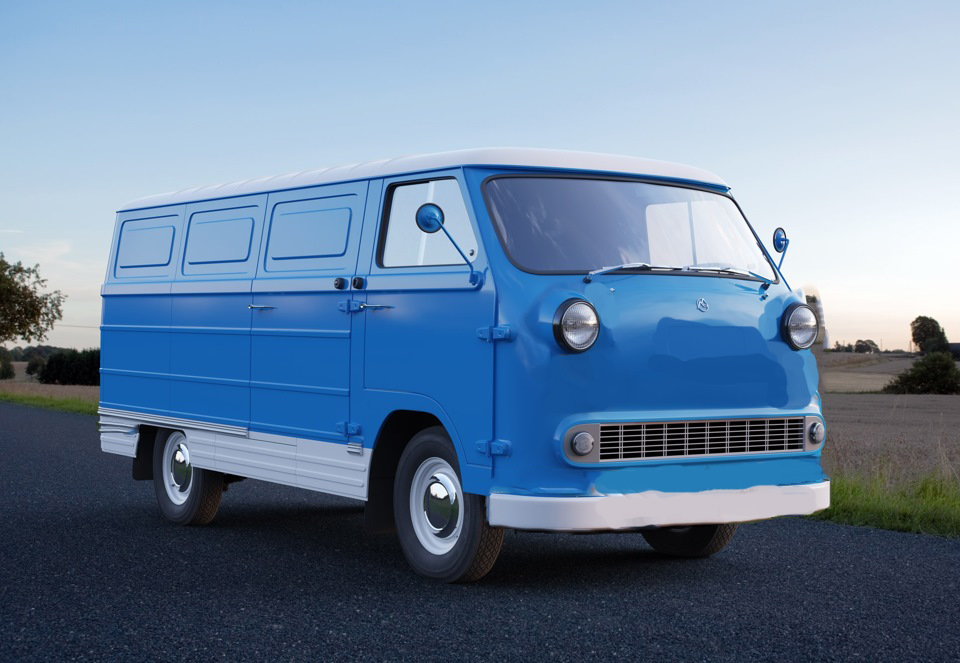
ErAZ (Yerevan Automobile Plant)
The emblem on the cars was the inscription "ErAZ". The letter "r" on the dark rectangular plate was hard to distinguish. Sometimes the inscription was made in an oblique version without a background. Later vans had a round chrome sign in the form of a pictogram depicting Mount Ararat and Lake Sevan, which are iconic for Armenians. Often, Yerevan cars were sold without badges, unlike the above-mentioned Soviet cars.
KAvZ (Kurgan Bus Plant)
In 1958, the first-born, designed by designers from Pavlovsk, left the workshop - "KAvZ-651 (PAZ-651A)" on the aggregate base of the GAZ-51 truck. Since 1971, the production of the 685 model has begun. Installing its body on the Ural tractors, Kurgan people assemble powerful shift workers. In 1992, the production of own buses began according to the carriage scheme, safer and more comfortable. In 2001, we developed an original school transport that complies with GOST for the transportation of children. Such machines were supplied not only throughout Russia, but also to Belarus, Kazakhstan and Ukraine.
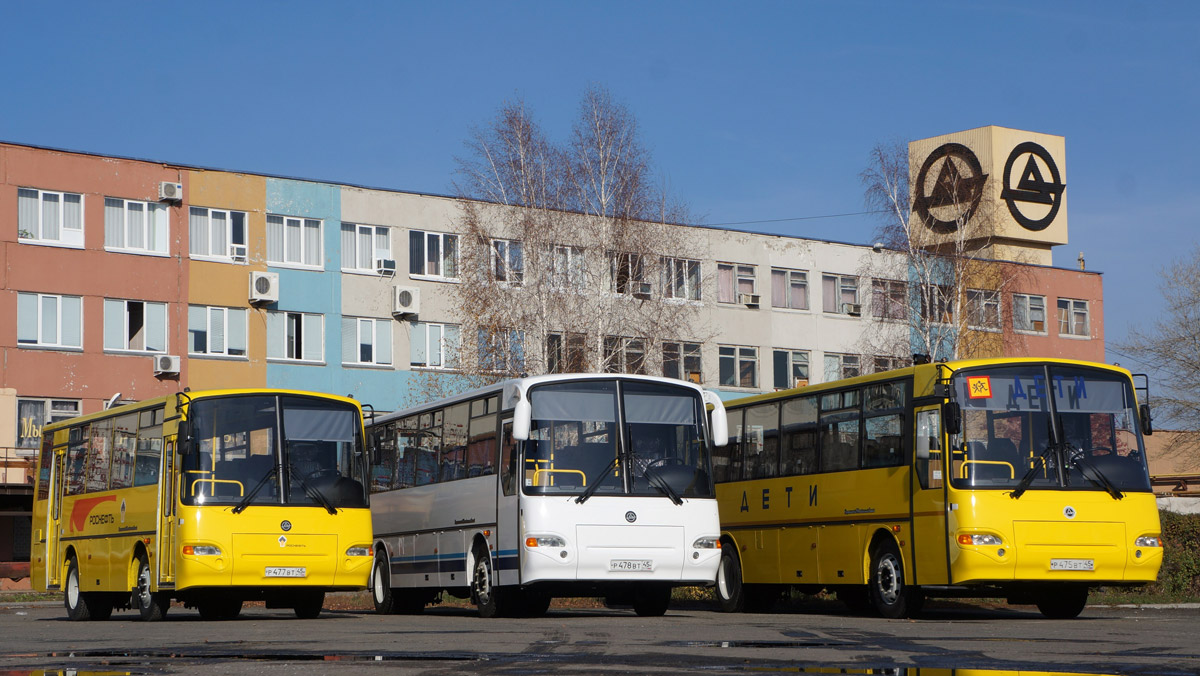
KAvZ (Kurgan Bus Plant)
Plain gray plates were attached to the old Ural hoods. In the center, a pair of mounds depicted with a river at the foot and a cloud above the peaks are taken in a circle with the inscription "Kurgan". On the left wing of the sign is written "KavZ", on the right - the numbered index of the model.
Models developed after the entry of the Kurgan automaker into the GAZ group carry a corporate logo in the form of a black shield with a running silver deer on the radiator grille.
RAF (Riga Bus Factory)
In 1953, the first full-size RAF-651 bonnets, copies of Gorky's GZA-651, were produced. In 1955, the RAF-251 wagon bus was launched. These products did not yet have their own emblem.
In 1957, the history of popular minibuses began, the prototype for which was the iconic Volkswagen van. Already in 1958, the release of "RAF-977" starts. On the front wall of his hull, a diagonal inscription RAF was placed on a red shield.

RAF (Riga Bus Factory)
In 1976, in Jelgava, near Riga, the production of the iconic Rafik-2203 began. Soviet designers tried to make car signs modern. The radiator grille of the mass-produced van was decorated with a spectacular red plate, on which the silhouette of a minibus with the upper part in the form of the abbreviation RAF is indicated by silver lines.
ZAZ (Zaporozhye Automobile Plant)
The car based on the new FIAT-600 under the name "Moskvich-560" was transferred for development in Zaporozhye. In 1960, the first small-sized ZAZ-965 cars were produced, called "humped" for the original body shape. The location of their auto badges was unusual for cars from the USSR. A molding descended from the windshield in the center of the trunk lid. It ended with a flattened red asterisk, in which the abbreviation "ZAZ" was skillfully inscribed.
Six years later, the Zaporozhets-966 saw the light of day, looking like the West German NSU Prinz 4. Because of the large air intakes located on the sides of the engine compartment, the people nicknamed the car "eared". An almost rectangular five-point emblem with a chrome rim is installed on the trunk lid. On the red field, traditional for badges of cars of the USSR, was depicted the symbol of Zaporozhye - the dam of the DneproGES named after V. I. Lenin, above - the inscription "ZAZ". Sometimes the cars were completed with a triangular red or white-red nameplate with the name of the plant at the bottom.

ZAZ (Zaporozhye Automobile Plant)
Since 1980, the company began to produce "Zaporozhets-968M", named "soap box" for its outdated primitive design. The 968 was completed with the same signs as its predecessor.
In 1988, mass production of Tavria began with a classic front engine. Later, on its basis, the five-door hatchback "Dana" and the sedan "Slavuta" were developed. These cars were badged with plastic badges in the form of a gray letter "Z" on a black background.
In 2017, the production of cars at ZAZ was discontinued.
